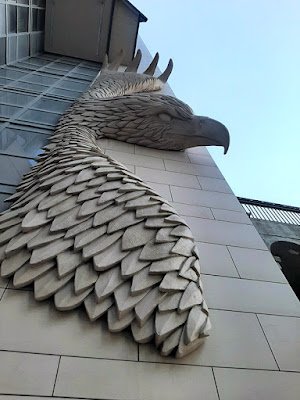Here's another striking mini mural thanks to StreetARToronto's Outside the Box program. This one was done in 2015 by Toronto artist Matt Cohen. For those of you unfamiliar with the neighbourhood, Dundas and Sumach is right in the heart of the former Regent Park housing development which has been the focus of intensive redevelopment since 2005. In the background of this photo you can see the colonnade of the new DuEast high rise condo development at 225 Sumach. If you visit the artist's blog, you'll notice that the background of the photo he took after completing the box looks much, much different. It's almost as if this photographer was placed here to capture the changes taking place in the neighbourhood.
NeaTO: The City of Toronto Archives has a massive photograph collection that documents much of the city, and it happens to have a picture of the north east corner of Dundas and Sumach from 1972, showing the low rise housing of Regent Park.



